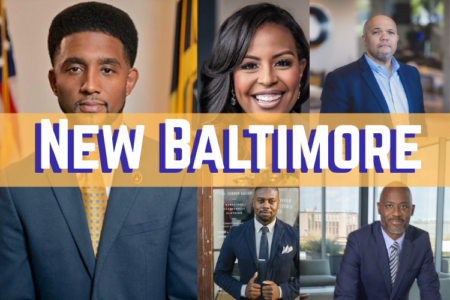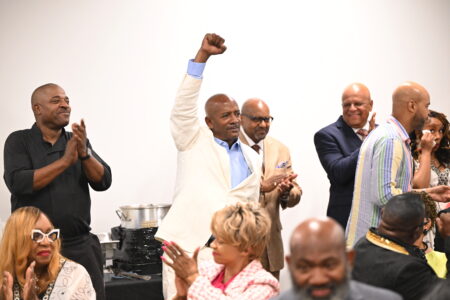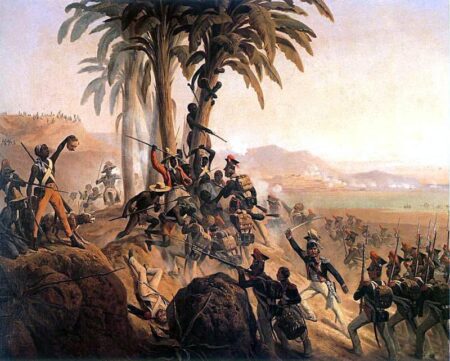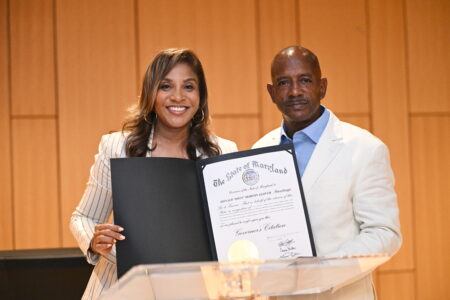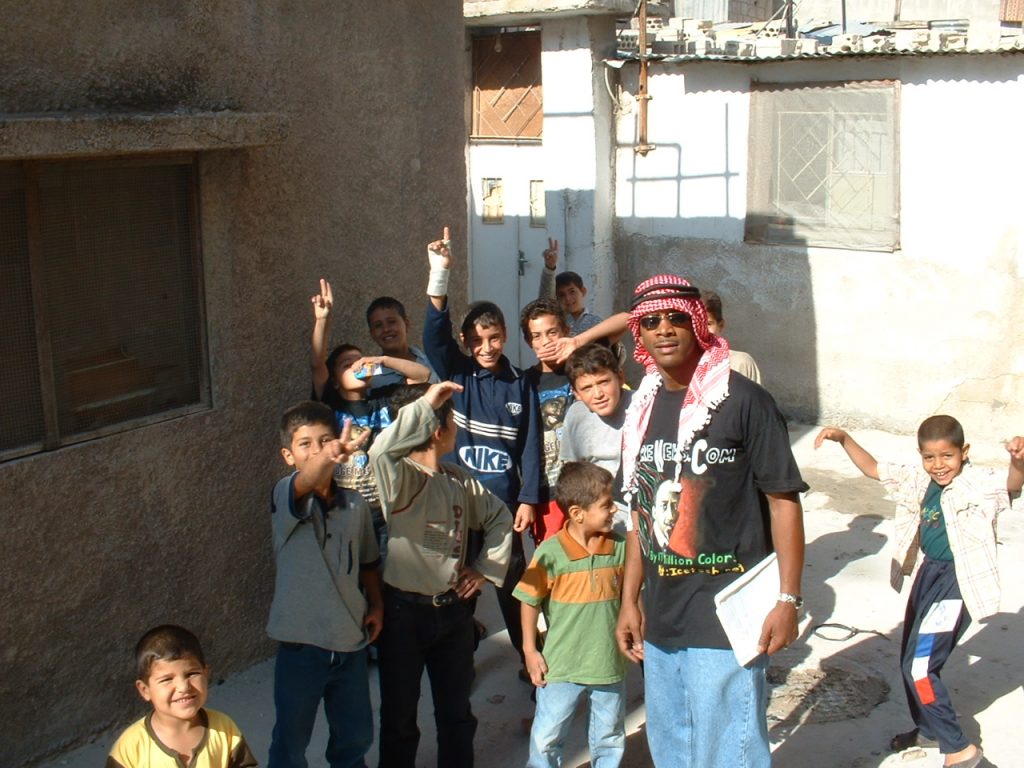By Doni Glover, Publisher
(BALTIMORE – September 23, 2022) – Over the years, we have attempted to re-circulate important Black History relevant to Baltimore and the state of Maryland. We have shared, for instance, information about Thomas Smith who owned the Smith Hotel and was the most prominent Black hotelier in America; he also ran a lottery and was large and in charge long before Willie Adams came on the scene. And we have shared information about the Lock Funeral Home in East Baltimore, one of the oldest Black-owned family businesses in America that go back to 1835; it is now owned by Funeral Director and Mortician Cynthia Galmore. Further, we have also discussed Isaac Myers, a phenomenal Black man who pioneered Black unions in America ŌĆō straight out of East Baltimore.
We share these types of historical facts so as to keep our history upfront. Too many of us do not know about the accomplishments of our ancestors. Consequently, we conditionally are taught to think, for instance, that all Blacks were enslaved. And that is simply not true. We are taught to think, too, that all Blacks came to America by way of a slave ship; again, that is simply not true. Just check out my latest book, ŌĆ£I Am Black Wall StreetŌĆØ (2021); in it, I share that Juan Garrido, a Black Spanish conquistador, was one of the first Blacks to come across the Atlantic in the 15th century. I also share a bit about Luzia, the Black woman whose bones were found in a cave in Brazil and date back 12,000 years.
WhatŌĆÖs important here is understanding that we have to do our own research about history because, quite frankly, people lie. Even more, itŌĆÖs not the white manŌĆÖs job to teach us our history. ThatŌĆÖs our job! For instance, at Matthew Alexander Henson Elementary School in West Baltimore named after the Black man from Charles County, MD who discovered the North Pole, we were taught by our beautiful Black teachers at an early age that had it not been for Dr. Herbert Frisby, a science teacher in Baltimore City Public Schools, Henson wouldnŌĆÖt have gotten credit for his accomplishment. It would have gone to the white man, Admiral Robert Perry. However, Perry never made it to the pole because of frostbite. Still, the Black man had to fight to be recognized.
With that said, there are four historically Black communities in Baltimore, the home of segregation, that every Black Baltimorean should know: Cross Keys, Hoes Heights, Morgan Park, and Wilson Park.
CROSS KEYS
For starters, who knew that Cross Keys was originally African American? Who knew?
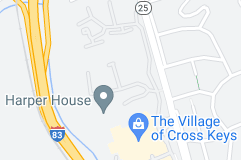
James Holechek knew! He authored Baltimore’s Two Cross Keys Villages in 2003, a story about ŌĆ£two communities virtually next door to one another. As one was dying, the other was born. Cross Keys Village (named after a nearby inn) was established by African Americans in north Baltimore. Forty years ago, in a surprise rush to urban renewal, the city condemned and tore down most of the homes to make room for a high school parking lot. He interviewed many of the former residents of the old Cross Keys Village to learn what life was like in their disappearing enclave. The Village of Cross Keys (named after the village that was named after the inn) was begun by developer James Rouse in 1961 when he purchased Roland Park’s exclusive golf course. He was called the ŌĆśSunday School teacher with a Midas touch and became America’s premier builder of new towns and shopping malls. In Baltimore’s Two Cross Keys Villages, readers learn about the tapestry of other hamlets and other people, of “The Falls Road,” Mt. Washington, Bare Hills and Ruxton, an 1835 log chapel, and a woman who carries on the heritage of the slave Tobias.
HOES HEIGHTS
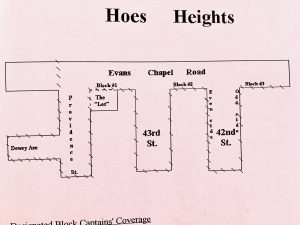
Hoes Heights is the second Black community that is important to know in Baltimore. Established by Grandison Hoe circa 1845, it is a small Black community located between Roland Park on the north and Hampden on the south.
For me, whatŌĆÖs interesting is that I had been previously under the impression that Blacks in Baltimore were only in East and West Baltimore. Here, we learn that Blacks were primarily in East and West Baltimore, but we also lived in Baltimore County in Oella, in Turner Station on the east side of the County, and in other places. I personally learned that there were no absolute rules ŌĆō despite institutional racism. I am reminded that despite racial animosity, Black people have historically found a way to accomplish anything and everything theyŌĆÖve desired. It wasnŌĆÖt easy. It took hard work, saving, know-how, and, I imagine, a ŌĆ£Black Wall StreetŌĆØ state of mind.
Here is more on Hoes Heights published by the Maryland Center for History and Culture:
ŌĆ£Ever wonder about Hoes Heights? The hidden and oft-overlooked north Baltimore neighborhood of Hoes Heights bears the name of Grandison Hoe, a freed slave in Antebellum Baltimore who once owned and operated a farm on the location. Nestled between its more renowned neighborsŌĆöHampden to the south and Roland Park to the northŌĆö this neighborhood remained entirely African-American until the last few decades. Hoes Heights, bound by Cold Spring Lane to the north, 41st Street to the south, Falls Road to the west, and Evans Chapel Road to the east, became part of Baltimore City under the 1918 Annexation Act. It is an architecturally diverse community consisting of 19th-century stick-style houses, turn-of-the-century single-family homes, and brick rowhouses. Many are probably familiar with this neighborhoodŌĆÖs most prominent featureŌĆöthe 148-foot tall water tower located on Roland Avenue near the intersection of University Parkway.ŌĆØ
This article goes on to note that Hiram Woods, a white business owner, wanted Hoes land and offered to relocate him to Cross Keys.
All of this is going on while slavery was still legal in America. Despite the racial tension at the time, despite the lynchings by the Ku Klux Klan across America, and all of the wicked deeds Black people had to endure, these proud and strong people were still on point. They made money, bought land, and they raised families. And again, not all Blacks were slaves. I think that is a most critical fact to retain. Despite what weŌĆÖve been taught to think, not all Blacks were in chains.
Additionally, let us remember that prior to the Civil War, Baltimore had the largest population of free Blacks in America. That is huge! If that doesnŌĆÖt motivate Black people today, I donŌĆÖt know what will. To know that Baltimore has always been a safe haven for Black people is to understand that this town is literally ours ŌĆō in a good way. Despite all of the crap the ancestors had to endure, Baltimore has always been a progressive place for Black people.
MORGAN PARK
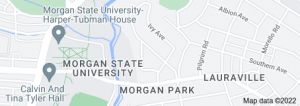
According to Explore Baltimore: ŌĆ£Morgan Park lies adjacent to Morgan State University and is surrounded by several Baltimore City parks (Mt. Pleasant Golf Course and Ice Rink, Chinquapin Run, Herring Run, and Lake Montebello). In 1917, Morgan College purchased 70 acres of land from the Ivy Mill estate as part of its relocation from West Baltimore thanks to funding from Andrew Carnegie. A small section of those 70 acres was set aside for faculty and administrator housing. Designed and built by African Americans who were unable to purchase housing in BaltimoreŌĆÖs widely known segregated neighborhoods, the area of bungalows and four squares became known as Morgan Park. Barred from living in various communities during the Jim Crow era, Morgan Park represented the opportunity for African Americans to achieve the American Dream in Baltimore. Over 145 houses of various architectural styles were built and owned by African Americans in Morgan Park. Its residents once included W.E.B. DuBois, Eubie Blake, Cab Calloway, and the Murphy Family (President of Morgan College). The neighborhood is in the process of applying for Historic Preservation status and holds at least one City Landmark for the home of W.E.B. DuBois. In 1918, residents of Lauraville were incensed that the nearby Ivy Mill property, where Morgan State University would eventually be built, had been sold to a “negro college.” They attempted to have the sale revoked by filing suit in the circuit court in Towson, which dismissed the suit. They then appealed the case to the state Court of Appeals. Morgan State was allowed to be constructed at this site and would later expand. Morgan Park is an architecturally significant resource that is historically important. Home to African American leaders in the civil rights movement, cultural icons, and faculty from MarylandŌĆÖs leading historically black college and university, at its inception Morgan Park found itself embroiled in an existential legal battle with the neighboring white community of Lauraville. The resolution of the conflict through the courts provided African Americans a legal victory and set a precedent for other court cases as well.ŌĆØ
WILSON PARK
Ever heard of Harry O. Wilson? Well, Baltimore historian Philip J. Merrill of Nanny Jack has and if you let him, heŌĆÖll give you the iconŌĆÖs entire history (listen to our interview). I tell you ŌĆō what I have constantly found is that the more you dig, the more you find.
As a person who loves both business and history, Harry O. Wilson is simply a fascinating story. While IŌĆÖve heard mention of his name over the years, Merrill has ensured that I am well aware of this Black banker whose bank stayed open through the Great Depression. Need I say more?
HereŌĆÖs a tidbit on Wilson by Rebuilding Together Baltimore:
ŌĆ£In 1917, Harry Wilson purchased land which we now know as Wilson Park from German Americans who had difficulties selling the land because of anti-German sentiment. He then built homes on the land establishing the Wilson Park neighborhood. The Wilson Park neighborhood provided an alternative suburban lifestyle for a growing affluent African American population that, at the time, was stifled by laws preventing black families from living in similar neighborhoods even if they could afford to.
A century later Harry O. Wilson is getting the recognition he deserves and the house that started a community has been eternalized as a Baltimore City landmark. Mabel Smith purchased the home on Craddock Avenue in 1992. At the time, the building was boarded up and in very bad shape. Mabel and her husband Walton did a full renovation that took close to 5 years. In 1997 they moved in.ŌĆØ
CONCLUSION
Quite often in America, a picture is painted whereby Blacks are often portrayed as on the periphery of progress, but never in it. The truth is, without Black History, there is a quite different America. We have been left out of the story too many times. Or, we are playing the servant – but never the captain. Folks, please don’t get it twisted. Blacks have always been involved, engaged, setting trends, kicking ass, and taking names.
Thank you, and go and read more about a glorious history too often disguised as folly. Black people have always played a role as men and women – despite the animalistic thinking of those white counterparts who supported the demeaning, degrading, and satanic treatment of other people. Through it all, STILL WE RISE!┬Ā ┬Ā ┬Ā






